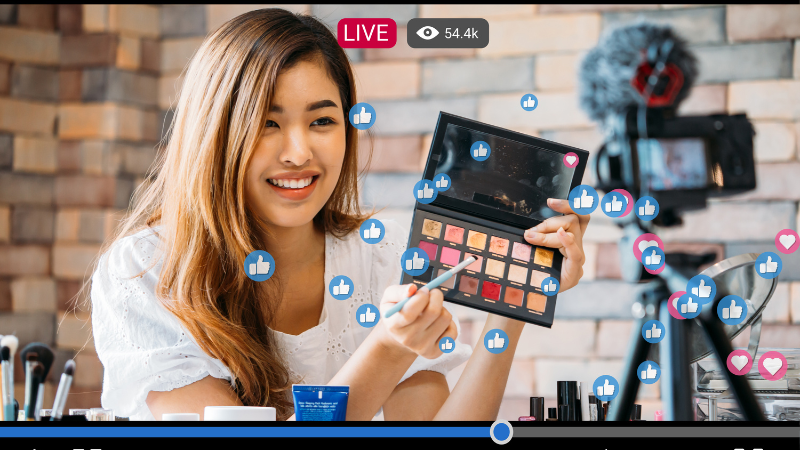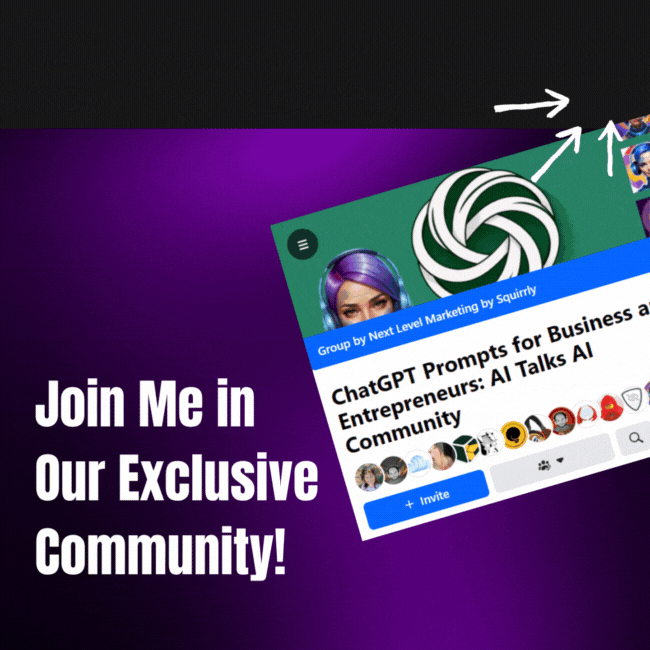In the ever-evolving world of digital marketing, staying ahead of the curve is not just an advantage; it’s a necessity.
One of the most exciting developments in recent times is the integration of artificial intelligence into various marketing strategies. Specifically, the use of ChatGPT for video marketing is a game-changer, offering unprecedented opportunities for brands to engage with their audience in more personalized and impactful ways.
The Power of Personalization
One of the standout benefits of using ChatGPT is its ability to personalize content.
Imagine crafting video messages that resonate personally with each segment of your audience. This isn’t just about addressing the viewer by name; it’s about tailoring the content, tone, and even the visuals to match the preferences and behaviors of different audience segments.
Personalization, as we know, is key to engaging and retaining customers in today’s crowded digital landscape.

ChatGPT for Video Marketing: Streamlining Content Creation
Content creation, especially for video, can be resource-intensive.
This is where ChatGPT steps in to make a difference. By automating aspects of the scripting and storyboarding processes, ChatGPT significantly reduces the time and effort involved in video production.
This efficiency doesn’t just save resources; it allows creative teams to focus on the more nuanced aspects of their campaigns, such as strategy and design.
Enhancing SEO with ChatGPT
In the realm of SEO, video content has become increasingly important. Videos are more likely to generate engagement, shares, and backlinks, all of which are crucial SEO factors. By using ChatGPT for video marketing, brands can optimize their video content not just for their audience but also for search engines.
The AI can help identify trending topics, suggest keywords, and even generate SEO-friendly titles and descriptions.
ChatGPT’s Role in Interactive Video Campaigns
Interactive video campaigns are a frontier in digital marketing, offering an immersive experience to the viewer.
ChatGPT can be instrumental in designing these campaigns, from generating interactive scripts to suggesting personalized pathways for different viewers. This level of interaction is not only engaging but can also provide valuable insights into customer preferences and behavior.
Overcoming Challenges with ChatGPT
While the benefits are clear, using ChatGPT for video marketing does come with its challenges.
One of the main issues is ensuring that the AI-generated content remains authentic and true to the brand’s voice. This requires a careful balance between automated content generation and human oversight.
Marketers must also be mindful of the ethical considerations and potential biases in AI-generated content.

Practical Tips for Implementing ChatGPT in Your Video Marketing Strategy
In the quest to leverage ChatGPT for video marketing, it’s crucial to move beyond the basics and dive into more sophisticated strategies. The following advanced tips offer insights on how to seamlessly integrate ChatGPT into your video marketing efforts.
Let’s dive in!
1. Start Small with Strategic Implementation
- Identify Specific Pain Points: Before diving in, conduct a thorough analysis of your current video marketing strategy to identify specific areas where ChatGPT can make a significant impact. For instance, if your team struggles with generating fresh content ideas, leverage ChatGPT to brainstorm and conceptualize unique themes and storylines.
- Pilot Projects: Implement ChatGPT in a small-scale project or a segment of your campaign. This could be a series of social media videos or a single promotional campaign. Monitor the outcomes closely to gauge the effectiveness and fine-tune your approach accordingly.
2. Focus on Quality with Deep Integration
- Brand Voice Alignment: Utilize ChatGPT to maintain and even enhance your brand’s voice in videos. Experiment with different writing styles and tones until you find a match that resonates with your brand identity.
- Quality Control Workflows: Implement a quality control workflow where AI-generated content is reviewed and refined by human experts. This ensures that the final output is not only high quality but also carries the nuances that only a human touch can provide.
3. Monitor and Adapt through Advanced Analytics
- Performance Metrics: Go beyond basic views and engagement rates. Utilize advanced analytics to understand how viewers interact with your AI-enhanced videos. Look at metrics like viewer retention rates, click-through rates for calls-to-action, and sentiment analysis of viewer comments.
- Feedback Loops: Establish a feedback loop where consumer reactions and feedback directly inform future video marketing strategies. This can involve detailed audience surveys, A/B testing with different video formats, and real-time engagement tracking.
4. Stay Ethical with Transparent Practices
- Disclose AI Involvement: Be transparent with your audience about the use of AI in your video content. This fosters trust and mitigates any potential misunderstandings about the origin of the content.
- Bias Checks: Regularly audit the AI models for biases. AI algorithms can unintentionally perpetuate stereotypes or biases, so it’s essential to review and adjust the models to ensure they align with ethical standards and inclusivity.
By implementing these practical tips, your journey into incorporating ChatGPT into your video marketing strategy becomes not just about adopting a new tool, but about transforming and elevating your marketing efforts to a whole new level of sophistication and effectiveness.

Exploring the Horizon: Future Trends in AI-Powered Video Marketing
As we look towards the future, the intersection of AI tools like ChatGPT and video marketing is poised to unveil groundbreaking innovations that redefine audience engagement. The rapid advancement of AI technology promises not just enhancements to existing marketing strategies but the birth of entirely new concepts in video content creation and distribution.
The possibilities are as exciting as they are endless.
1. Real-Time Video Content Customization
- Adaptive Storytelling: Imagine a marketing video that changes its storyline in real time based on viewer reactions or interactions. Using sentiment analysis and viewer engagement data, AI could dynamically alter video narratives, ensuring maximum engagement for each viewer.
- Context-Aware Content: Future applications could see AI integrating contextual data like time of day, weather conditions, or even recent news events to tailor video content in real time, making each viewing experience unique and highly relevant.
2. AI-Assisted Live Video Interactions
- Interactive Live Streams: In live streaming, AI could act as a real-time moderator or assistant, responding to viewer comments, questions, and reactions on the fly. This would add a layer of interactivity and engagement that is currently unattainable in standard live streams.
- Personalized Live Content: AI could customize live video content for different audience segments simultaneously. For instance, offering personalized product recommendations or tailored messages within a live event based on individual viewer data.
3. Advanced Predictive Analytics
- Behavioral Forecasting: Leveraging deep learning, ChatGPT will be able to predict future consumer behavior and preferences based on historical data, enabling marketers to create video content that aligns with anticipated trends and shifts in the market.
- Pre-Emptive Video Marketing: This involves creating and positioning video content ahead of the curve, addressing consumer needs and interests before they become mainstream, offering a significant competitive advantage.
4. Enhanced Virtual and Augmented Reality Integration
- AI-driven VR/AR Experiences: AI could be used to create more immersive and interactive VR and AR marketing experiences. By understanding user interactions within these environments, it could offer personalized virtual experiences, enhancing brand engagement in the digital space.
- Virtual Influencers and Representatives: The rise of AI-driven virtual beings could revolutionize influencer marketing. These virtual influencers can interact with audiences in real time, offering a novel and engaging way to present brand messages.

The future of AI in video marketing is not just about more sophisticated technology; it’s about creating more meaningful, engaging, and personalized connections with audiences. As AI continues to evolve, the potential for innovative applications in video marketing is limitless, paving the way for more immersive, predictive, and interactive experiences that resonate deeply with viewers.
These advancements will not only enhance the way brands connect with their audiences but also redefine the landscape of digital marketing as a whole.
The Future is Now
The integration of ChatGPT in video marketing is not just a fleeting trend; it’s a glimpse into the future of digital marketing.
By leveraging the power of AI, marketers can create more personalized, engaging, and effective video content. As we continue to navigate this digital era, embracing innovations like ChatGPT will be crucial for staying ahead in the competitive landscape of digital marketing.
Ready to explore more about the dynamic world of digital marketing?
Dive into our blog for a treasure trove of insights on topics ranging from search engine optimization to the innovative use of AI in marketing. Discover new strategies, stay updated on the latest trends, and keep your marketing game strong!













